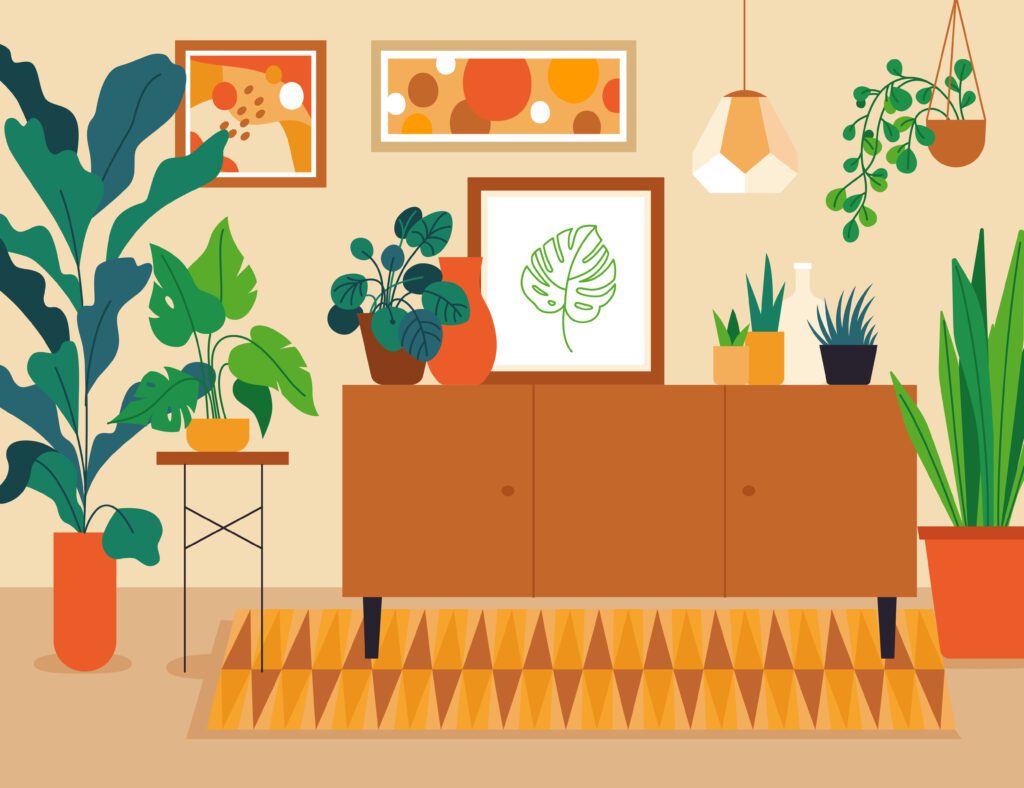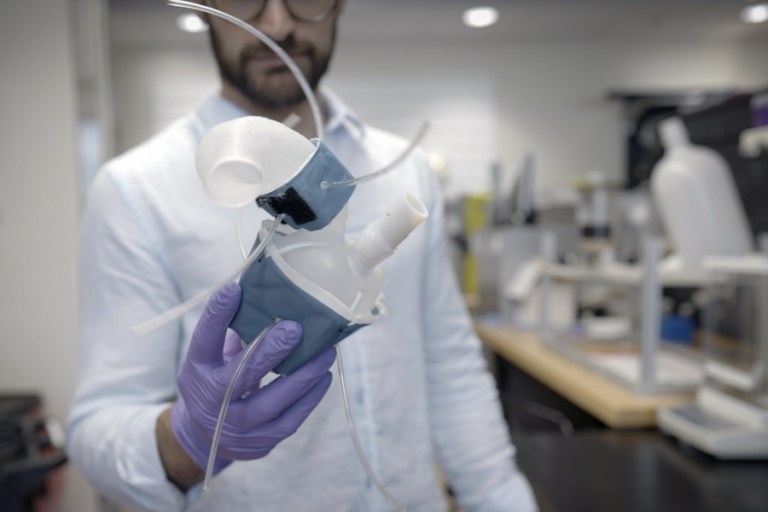Recommendations are independently selected by our team but may result in a commission to Nice News which helps keep our content free.
The positive influence of nature on physical and mental well-being has been extensively documented — and you don’t need to start forest bathing on the regular to reap the benefits (though we’re all for that practice). A vast body of research points to the power that houseplants have to improve our health.
Back in 1989, NASA conducted a breakthrough study on the air-purifying effects of indoor plants. The agency determined that several common houseplants are able to remove the carcinogens benzene, trichloroethylene, and formaldehyde. All three belong to a class of chemicals called volatile organic compounds, or VOCs, which easily evaporate into the air and are frequently found in household products.
In addition to removing pollutants from the air we breathe, indoor greenery has been shown to lower blood pressure and reduce stress. “We see a clear connection with the fact that being around plants improves cortisol levels in our body,” Melinda Knuth, an assistant professor of horticultural science at North Carolina State University, told Time magazine in March 2023. “We hold our stress hormone, cortisol, in our saliva, and we know this is decreased when we’re around plants.”
There’s also evidence to suggest houseplants increase focus, enhance creativity, and boost our moods. A 2022 systematic review of 42 studies on houseplants’ effect on human functions determined that “indoor plants, in general, affect participants’ functions positively, particularly their physiology and cognition.”
Geared up to add more greenery to your home? Keep reading to learn about seven of the best houseplants for improving your health and well-being. Note: Some of the plants on this list aren’t safe for pets. See 30 types to avoid if you have four-legged friends.
Snake Plant
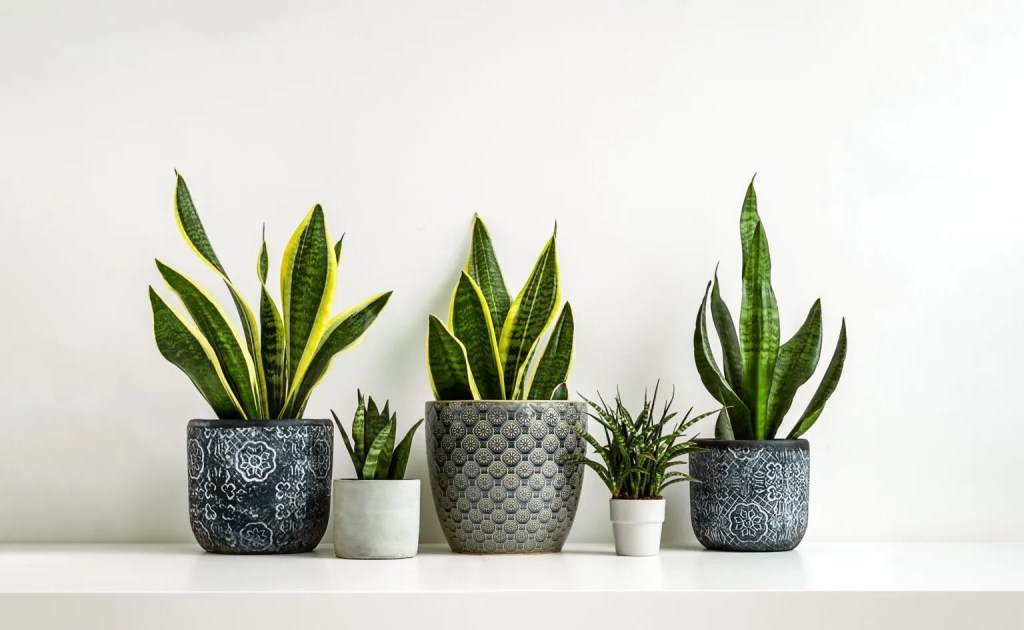
Dracaena trifasciata, also known as the snake plant or (quite cheekily) mother-in-law’s tongue, is low-maintenance, easy to propagate, and does best in indirect light. An evergreen perennial, it can bloom about once a year, producing pretty cream-colored flowers that sometimes develop into small orange fruits, according to Kew Gardens.
Formerly called Sansevieria trifasciata before it was properly identified as belonging to the Dracaena genus in 2017, the snake plant was found to filter out all three of the chemicals tested for in NASA’s Clean Air Study.
Per Healthline, it also has a history of being used in the practice of feng shui. “The Chinese love the snake plant for its ability to absorb negative energy,” botanist Halina Shamshur told the website.
Shop: Amazon | Easyplant | The Sill
Pothos
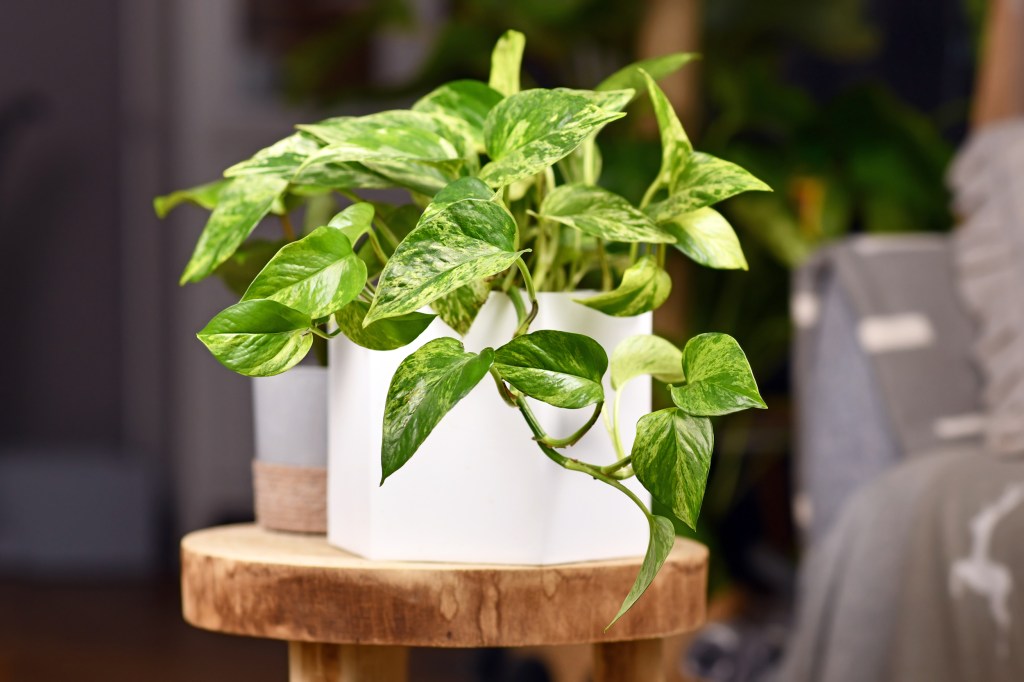
Pothos, or devil’s ivy, is admired for its glossy leaves and extreme hardiness — meaning even those with the least green of thumbs can care for it. (And if you opt to purchase one from Easyplant, you won’t even have to worry about watering it regularly.)
Officially named Epipremnum aureum, pothos makes an ideal hanging plant, as its cascading vines can reach lengths of 40 feet, according to North Carolina State University. In the NASA study, it was shown to remove 73% of benzene in a sealed experimental chamber during a 24-hour exposure period.
It thrives in bright, indirect light, but can also survive for some time in low-light environments, so it’s an ideal choice for anyone looking to benefit from the positive health impacts that houseplants have to offer.
Shop: Amazon | Easyplant | Public Goods
Peace Lily
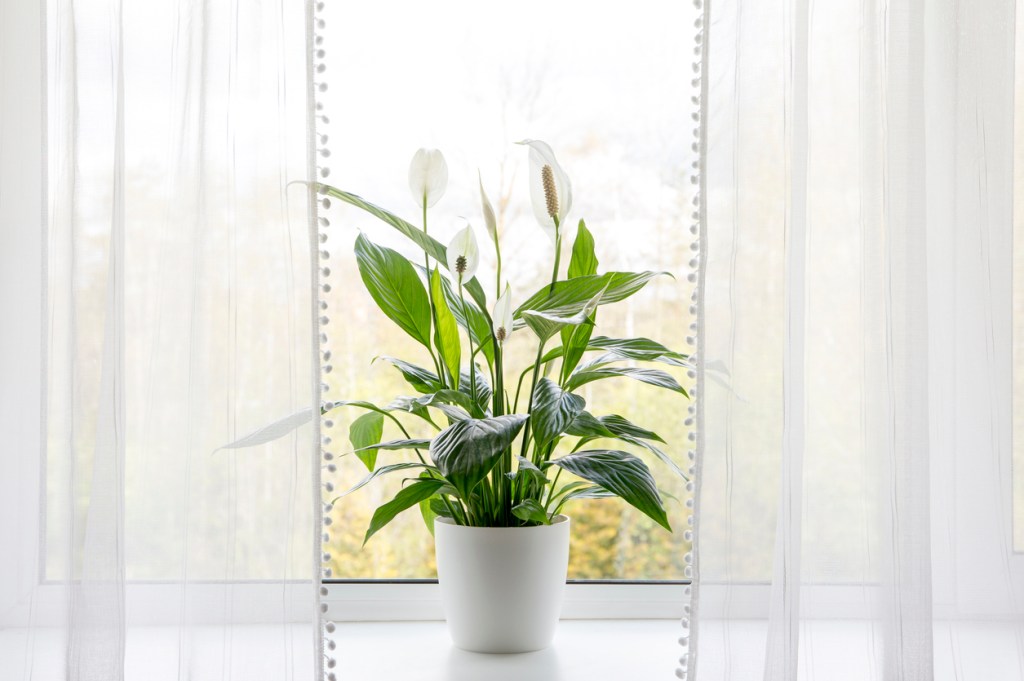
For a more glamorous green (and white) addition to your home, go for the peace lily, or Spathiphyllum wallisii. The tropical, evergreen plant is native to Central and South America, and grows fairly easily indoors, doing best in bright, indirect sunlight, per the Farmers’ Almanac.
Peace lilies were found to remove all three of the carcinogens involved in the NASA study, and a 2021 study published in the journal Applied Sciences further points to the plant’s air cleaning abilities. Its beautiful flowers, which resemble white flags of peace, are sure to act as a mood booster.
If you have kids or pets, you may want to avoid this one, however, as ingesting it can cause illness.
RELATED: “The Aesthetics of Joy”: 10 Ways Our Surroundings Can Positively Influence Emotions — Exclusive
Shop: Amazon | Lula’s Garden | Public Goods
Spider Plant
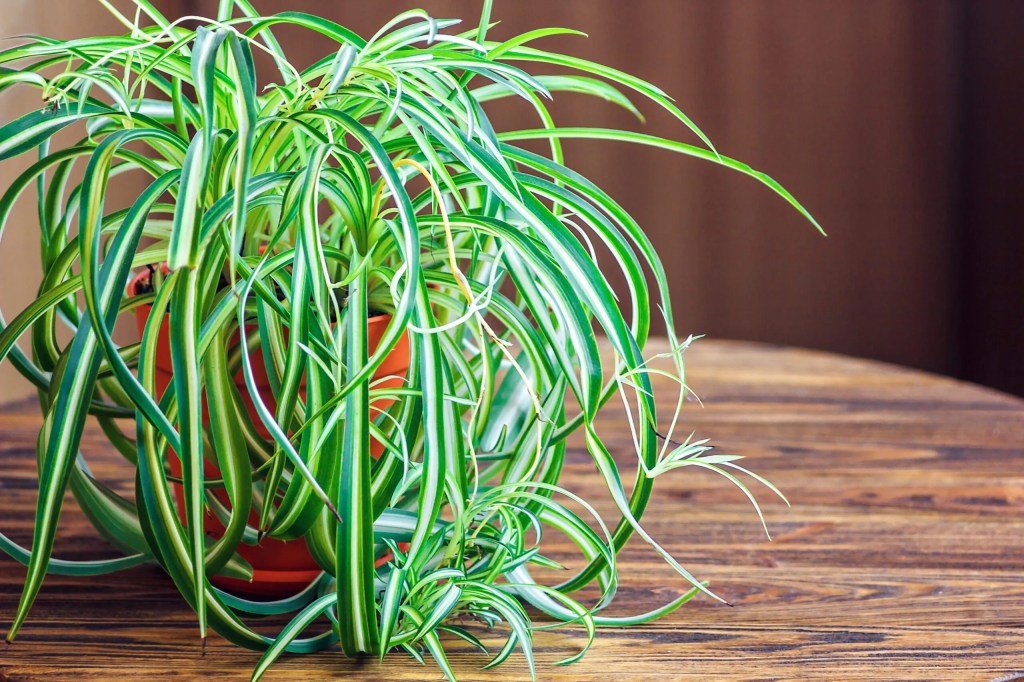
One of the most common houseplants, the spider plant, or Chlorophytum comosum, is a great choice for beginners as it’s “easy to grow and propagate, tolerant of neglect, and able to thrive in nearly any type of condition,” per the University of Wisconsin-Madison.
Native to coastal South Africa, the plant has been shown to be effective at filtering VOCs and carbon monoxide in the home, according to the institution.
Its stems typically grow to around 2 feet long, and can produce small white flowers at the ends.
Shop: Amazon | The Sill | Public Goods
Bird’s Nest Fern
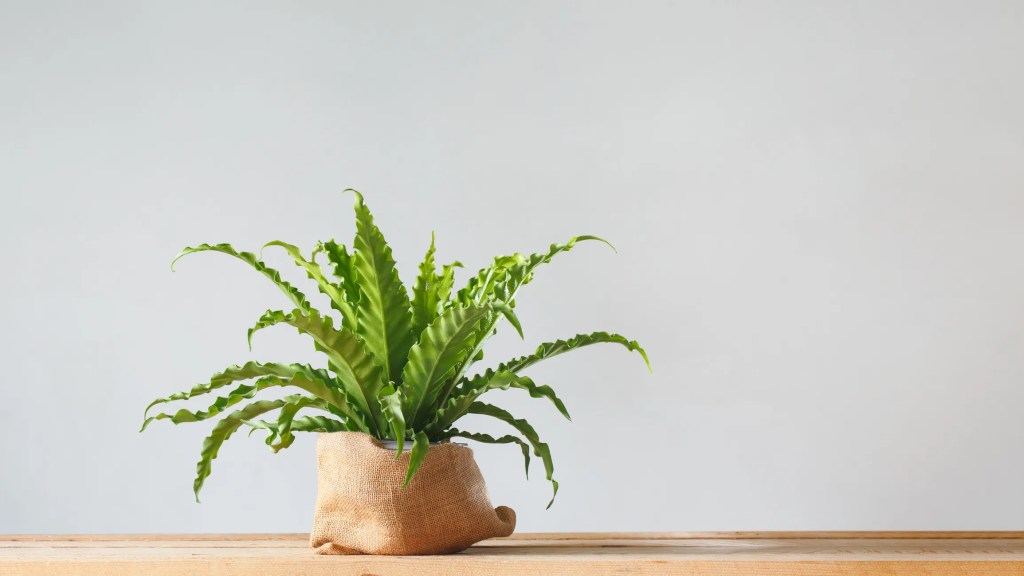
Popular with plant enthusiasts since the Victorian period, per the San Diego Zoo Wildlife Alliance, bird’s nest ferns, or Asplenium nidus, produce bright green fronds that grow upright in a rosette formation, creating a bowl shape that is reminiscent of a bird’s nest.
The plants are slow growing, and do best in indirect sunlight or shade. They also tend to prefer humid environments, which can be an issue during winter (unless you’ve got a good humidifier).
That said, the plant actually raises humidity in the home, according to a 2015 study published in The Horticultural Journal. Researchers found that installing green walls filled with potted bird’s nest fern resulted in “high rates” of CO2 and formaldehyde removal, reduced indoor temperatures, and raised relative humidity by 10%. Check out these wall planters if you’re feeling inspired.
Shop: Amazon | The Sill | Easyplant
Rubber Plant
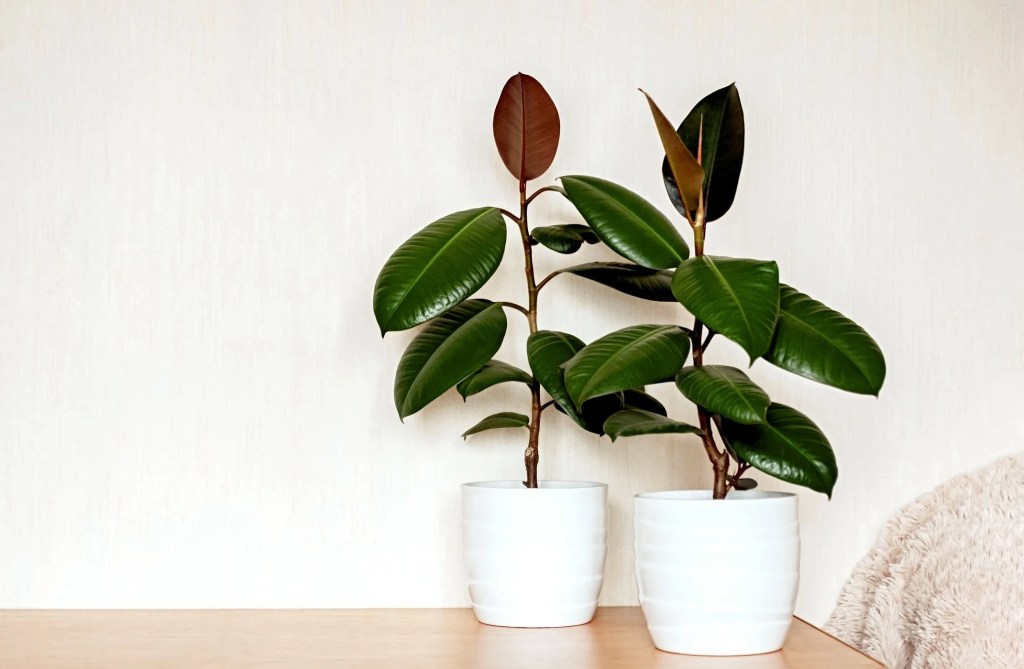
Ficus elastica, also known as rubber plants or rubber trees, make wonderful indoor greenery additions. With their dark, shiny leaves and capacity to grow to impressive heights, they stand out in any room.
Relatively low-maintenance, rubber plants thrive in bright indirect light and tend to prefer more humid environments, so you may want to mist their leaves in the dry months, according to MasterClass.
Environmental scientist Bill Wolverton, who co-authored the NASA study and spent years researching the air cleaning capacities of plants, lists the rubber plant in his book How to Grow Fresh Air: 50 Houseplants That Purify Your Home or Office.
Shop: Amazon | Easyplant | The Sill
